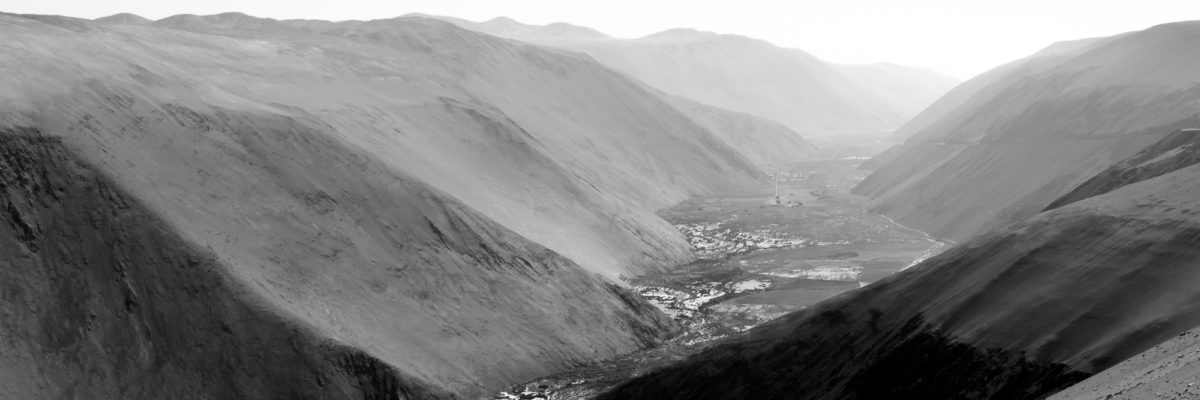Down in the valley, among the verdure, the landscape seems still, immobilised in time. Giant slopes of sterile rock bear down from above, arid, expectant in an epochal wait for rain. Yet carved between the high walls, the valley floor, with its regular crops of alfalfa and corn, is of a different time. The boulders and pebbles that lie scattered across the riverbed stand at rest, a temporary pause on their journey down from the Andean highlands to the sea. These petrified fragments of an immense telluric memory are testament to the youthful vigour of the mountains that bore them, the wave of rock that surged up from the Pacific Ocean to form the Andes.
Some of the stones, no doubt, have siblings way up there, up where the air is thin and fresh, where the snow-capped volcanoes of Isluga and Guallatiri attract giant storm clouds with their magnetic pull. Some of the rocks would have been present in the immense columns of burning ash and debris thrust skywards from the bowels of the Earth to hang suspended in the air by great updrafts of igneous gas, before collapsing in devastating waves that ripped down the mountain slopes with force enough to bury a small country under the volcanic rubble. [ Continue reading → ]
